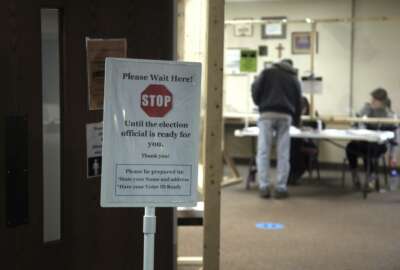
2021 COLA mixed bag for retirees
News that they will be getting a 1.3% cost of living adjustment in January 2021 is getting a mixed reception from federal, military and Social Security retirees...
News that they will be getting a 1.3% cost of living adjustment in January 2021 is getting a mixed reception from federal, military and Social Security retirees. The inflation catch-up will to go roughly one in six Americans. And its more than some analysts had predicted based on the low inflation rate over the past 12 months And its 100% more than most retirees — who depend on pensions promised by their private sector employers — will be getting.
In many if not most pension programs, people retire on a fixed amount that never changes no matter how long they live, or how much inflation goes up over the years. That’s the good news.
The not-so-good-news is that while 1.3% is more than many expected, but it won’t be enough to cover higher living costs that most retirees must contend with. That includes health insurance premiums which are expected to rise in 2021 for many feds and most retirees. The COLA is determined by the rise, if any, in living costs in the previous year’s third quarter (July, August and September). That’s contained in the Bureau of Labor Statistics CPI-W (consumer price index workers) yardstick.
But many retirees, including the National Active and Retired Federal Employees, contend that rather than focusing on changes in wages and prices for people who are working, the yardstick for retirees should take into account the fact that they typically spend more — in some cases a lot more — each year on things like prescription drugs and medical services.
COLAs for people getting Social Security benefits, retired military pay and people retired under the old civil service retirement system (CSRS) are the same each January. Most current federal retirees are under the CSRS program. But the vast majority of civil servants working today and of those retiring in the future are under the federal employees retirement system (FERS) program. FERS includes Social Security (to which people contribute) and a 401k plan (the Thrift Savings Plan) which includes a match of up to 5% from the government. The FERS monthly annuity is smaller than under CSRS, and it is subject to a diet-COLA formula. If the January COLA is 2%, all retirees get the same increase. But if it exceeds 2%, the FERS retirees are subject to diet-COLA rules — meaning they get one percentage point less than the full COLA. Over time NARFE and financial planners say that diet COLA can dramatically reduce the amount of money FERS retirees have, and need, to spend.
COLAs vary rapidly with inflation. Years ago COLAs at or approaching the double-digit mark were not unusual. There have also been years there was no COLA because the White House and Congress froze them along with federal pay. Here’s the history of COLAs over the last 20 years for both CSRS and FERS retirees:
| Year | CSRS/Social Security | FERS |
| 2021 | 1.3 | 1.3 |
| 2020 | 1.6 | 1.6 |
| 2019 | 2.8 | 2.0 |
| 2018 | 2.0 | 2.0 |
| 2017 | 0.3 | 0.3 |
| 2016 | 0 | 0 |
| 2015 | 1.7 | 1.7 |
| 2014 | 1.5 | 1.5 |
| 2013 | 1.7 | 1.7 |
| 2012 | 3.6 | 2.6 |
| 2011 | 0 | 0 |
| 2010 | 0 | 0 |
| 2009 | 5.8 | 4.8 |
| 2008 | 2.2 | 2.0 |
| 2007 | 3.3 | 2.3 |
| 2006 | 4.1 | 3.1 |
| 2005 | 2.7 | 2.0 |
| 2004 | 2.1 | 2.0 |
| 2003 | 1.4 | 1.4 |
| 2002 | 2.6 | 2.0 |
| 2001 | 3.5 | 2.5 |
| 2000 | 2.4 | 2.0 |
There’s also the new paid parental leave program. Lots of people are excited about the new benefit. Many of them are confused. For good reason. For example — who is eligible? What link does it have with accumulating sick or annual leave? Why do people have to be eligible for the FMLA to participate? And what’s the family leave act cover? You’ve got questions, we’ve got or will get the answers. Federal News Network has had extensive coverage by Nicole Ogrysko on the subject.
We’ve also talked with many, many feds and picked up more questions and suggestions on the way. So today’s guests on Your Turn (10am EDT) will have the answers. They are Jessica Klement, NARFE’s staff vice president for policy and programs, and legislative specialist John Hatton. If you have questions for them, shoot them to me before showtime. The show will be archived in case you want to hear it again, listen later or pass it on to a friend. It will also be on air at 1500 AM in the D.C. area.
Listen. Could save you lots of time, money and grief.
Nearly Useless Factoid
By Alazar Moges
The state of Alaska has the largest land area in the nation, followed by Texas and California. It was purchased by the United States on March 30, 1867 from Russia for a price of $7.2 million.
Source: Library of Congress
Copyright © 2024 Federal News Network. All rights reserved. This website is not intended for users located within the European Economic Area.
Mike Causey is senior correspondent for Federal News Network and writes his daily Federal Report column on federal employees’ pay, benefits and retirement.
Follow @mcauseyWFED





